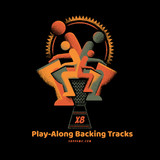A Brief History of the Djembe
How much do you know about the origin of your Djembe? Beyond the actual drum in your hands, the history of the Djembe is rich and full of tradition. Its earliest recorded appearance is in 12th century Mali, and is thought to have been originally crafted by the “numu” or blacksmiths of that time. There is also a legend of its creation being attributed to a woman who broke the bottom of her mortar while pounding grain and attached a goat skin to repair the break. Djembes still resemble the same mortars used today by African women. (Source: http://www.african-music-safari.com/djembe-history.html)
The Djembe’s popularity burst forth into the Western world in the 1950s with the popularity of Les Ballet Africains led by Fodeba Keita. Ballets and showcases such as Les Ballet Africains were attempts at preserving the historical culture that was being left behind as more "modern" ways of life evolved within Western Africa. Les Ballet Africains took traditional African rhythms and drumming and put them up on a stage, showcasing the rhythms in a stage setting. Making these rhythms more accessible to the public took away much of the tradition of drumming and dancing, but also gave the culture a chance to express itself and begin to evolve into today’s newer and more Western take on drumming.
Djembes have been around for centuries and continually improve the sound of music today, as well as integrate cultures and societies around the world. Playing a Djembe makes you part of a rich and diverse history, and can give you the inspiration to continue the evolution of drums, drumming and music that promotes global unity.
Recent Posts
-
X8 Drums Play-Along Backing Tracks
The new X8 Play-Along Series is being produced for our musician friends wanting a fresh way to work …9th Feb 2025 -
What is the Best Size Djembe for Beginners?
If you're new to the world of percussion and interested in learning the djembe, you're in for a t …16th Jul 2024 -
The Benefits of Becoming a Drumming Teacher: Transforming Passion into Profession
Why become a drumming teacher? Becoming a drumming teacher is an excellent way to share your pas …22nd May 2024



